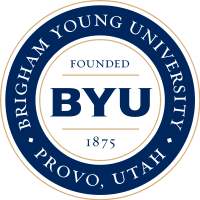Toehold
From 2012.igem.org

|

|

|
| Home | Team | Team Profile | Project | Parts | Modeling |
|
Safety | Outreach | Collaboration | Attributions |
Contents |
February
2/23/2012
We ran a PCR (JS13-1) (page 13 of John's lab book, 1st entry) to amplify the PJG407 plasmid (which we are going to use for our toehold) and a second, which was our control. Protocols (this is the standard protocol)
10 μL Hf (5x) buffer
1.5 μL dNTP
1 μL template PJG407
1 μL forward primer BI105
1 μL reverse primer BI106
35 μL H2O
0.5 μL Phusion polymerase
Control (JS13-2) standard protocol, without the template
It didn't work (we ran it on a gel and there was no PCR product).
2/28/2012
We ran the same PCR again, to amplify the PJG407 plasmid, along with one for the control. (JS14-1 and JS14-2)
It didn't work yet again.
March
3/2/2012
We obtained another copy of the plasmid (the previous one we got from the chem department) from Dr. Grose's lab (also PJG407), so from here out we refer to the one from the chem department as PJG407B. We did PCR with both and a control (JS15-1, JS15-2, JS15-3)
Same PCR as before (same BI105 and BI106 primers), one with PJG407 template, one with PJG407B template and one without a template.
We ran them out on gel and once again they did not work.
3/6/2012
We double and triple checked the primers, they are correct, so we grabbed a bacteria from Dr. Joel Griffits lab (PJG340) and streaked it on a plate to grow over the weekend
3/13/2012
We boiled our PJG340 plasmid (JS16-1) Protocol:
50 μL dd H2O and a swab of bacteria in a PCR tube: boiled for 5 minutes.
This we will use as our template.
We set up and ran PCR:
JS16-2 (PJG340 plasmid modification and amplification)
10 μL Hf (5x) buffer
1.5 μL dNTP
1 μL template PJG340 (JS16-1)
1 μL forward primer BI105
1 μL reverse primer BI106
35 μL H2O
0.5 μL Phusion polymerase
JS16-3 (control)
10 μL Hf (5x) buffer
1.5 μL dNTP
1 μL forward primer BI105
1 μL reverse primer BI106
35 μL H2O
0.5 μL Phusion polymerase
We ran this on the phusionlong setting.
3/15/2012
Picked up the PCR products. The pen markings rubbed off, so we don't know which one is JS16-2 and which one is JS16-3. So, we ran them on a gel (labeling on a and on b), to discover which was our PCR and which was our control.
Well 1 - ladder
Well 2 - sample labeled a
Well 3 - sample labeled b
Yeah, it didn't work. Dr. Grose suspects a problem with the primers. She said that often longer primers have issues.
3/16/2012
Karl and I started designing new primers today.
April
4/30/2012
Karl and Jordan worked on doing a Platinum PFX polymerase pJG407
5 μL Pfx buffer
1.5 μL dNTP
1 μL 50mm MgSO4/BI153
1 μL each Primer/BI154
1 μL template-> pJG407
50 μL H2O
0.4 μL Pfx polymerase
May
===5/3/2012=== Jordan performed a Dpn Digest
80 μL ddH2O
20 μL buffer H2O
5 μL DpnI
37°C o/n cre 2hrs +.
5/7/2012
Karl Worked with Julie on 37°C thermosening colonies and discussed random mutagenisis for the thermosensor.
5/8/2012
Jordan and I (John) tried to run the Multi-site Site Directed Mutagenesis again. We are using the plasmid pJG407 and the primers Bi153 and BI154, which are primers designed to anneal to the plasmid and delete a 15-bp sequence containing the SD. The MCS is kept intact, though.
5 μL Pfx buffer
1.5 μL dNTP
1 μL 50mm MgSO4
1.5 μL each Primer/BI153 and BI154
1 μL template-> pJG407
38 μL H2O
0.5 μL Pfx polymerase
The control had everything but the plasmid template.
5/11/2012
Jordan and I (John) did a Dpn digest:
80 μL ddH2O
20 μL buffer H2O
5 μL DpnI
These items we put into the PCR product and left it at 37°C
5/14/2012
Jordan and I (John) added 25 μL of competent E. Coli and then heat shocked for 1 minute (42°C) and put right back onto the ice. Then we added 500 μL of LB (nutrient broth) and put it to incubate for an hour and a half in a 37°C bath. Then we plated it on LB-Kanamycin.
 "
"